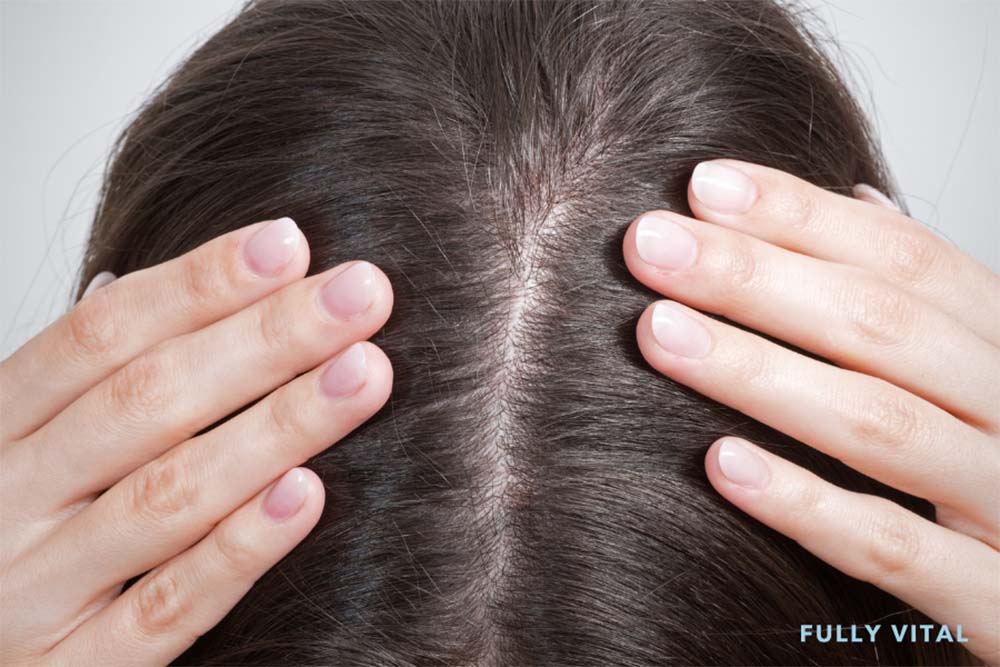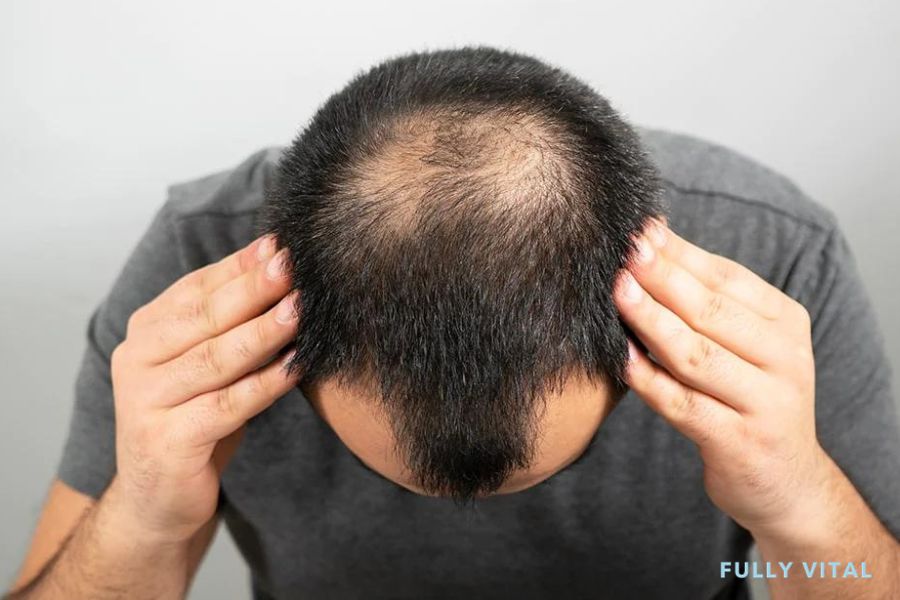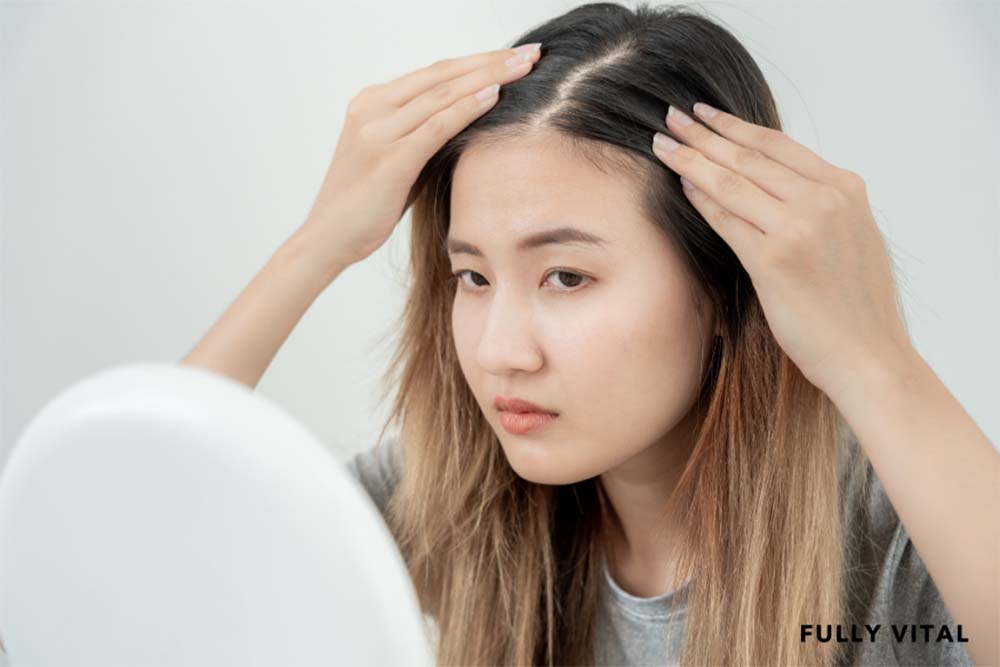
Types of Hairlines: Everything You Need to Know
As a woman with dreams of achieving luscious and healthy locks, you may have come across the term "types of hairlines" in your hair growth journey.
In this article, we will go into the importance of understanding different types of hairlines, how they work, their benefits, potential downsides, and alternative solutions.
So, let's get started on this exciting hairline exploration!

I LOVE MY HAIR NOW
FullyVital hair serum and hair vitamins made tremendous improvements in my hair. I truly love my hair now.
Dorit S.,
What Are The Different Types Of Hairlines?
Types of hairlines refer to the different patterns and shapes that our hairline can naturally form.
They can be categorized into several common types, including:
Straight Hairline
A straight hairline is characterized by a horizontal line that goes straight across the forehead.
This type is commonly seen in individuals with thick and straight hair.
Receding Hairline
A receding hairline is marked by the hairline pulling back from the forehead, creating an M or V shape.
It can be a natural development with age or may indicate hair loss or male pattern baldness.
Widow's Peak
A widow's peak features a small V-shaped point in the center of the forehead.
This type is often associated with a slightly receding hairline at the temples.
High Hairline
A high hairline starts further up the forehead than the typical hairline, giving the appearance of a larger forehead.
It can be a natural variation or hair loss related.
Low Hairline
A low hairline sits closer to the eyebrows and may appear further down the forehead.
It can create a more youthful and feminine look.

What Is The Science Behind The Different Types Of Hairlines?
Hairline types are primarily determined by a person's genetics and hormones.
The positioning of hair follicles and their sensitivity to hormones, such as dihydrotestosterone (DHT), can influence the shape and thickness of the hairline.1
Additionally, factors like age, health conditions, and stress can impact the appearance of hairlines.
Researchers continue to study the complexities of hair growth and its relationship with hairline types, shedding light on potential treatments and preventive measures.
How Do Genetics Influence The Various Types Of Hairline?
The genetics of hairline types play a significant role in determining the hairline pattern a person inherits.
Certain genes influence hair follicle development, shape, and distribution, resulting in unique hairline traits.
Understanding the genetic basis of hairlines helps individuals appreciate their natural hairline and make informed decisions about hair care and styling options.
What Are The Common Changes That Happen In Our Hairlines As We Age?
As we age, our hairlines often undergo changes that are influenced by various factors.
Let's explore the connection between hairlines and age:
Receding Hairline
One common change associated with aging is a receding hairline.
For many individuals, the hairline gradually starts to pull back from the forehead, creating an M or V shape.
This can be a natural part of the aging process or an indication of male pattern baldness.
Thinning Hair
As we get older, our hair may naturally become thinner, leading to a less defined hairline.
This can result in a softer and less prominent hairline compared to a younger age.
Graying Hair
Along with changes in hairline shape, the color of our hairline also evolves as we age.
Gradually, our hair may turn gray or white, affecting the overall appearance of our hairline.2
What Are The Benefits Of Understanding Your Hairline?
Knowing your hairline type can empower you to make the most of your hair's potential.
Here are some benefits:
- Choosing the Right Hairstyle: Understanding your hairline type helps you select hairstyles that complement your face shape and enhance your natural features.
- Personalized Hair Care: Different hairline types require various hair care routines. By identifying your hairline type, you can tailor your hair care regimen to address specific needs and maintain healthy hair.
- Hair Growth Strategies: If you are trying to stimulate hair growth, understanding your hairline type can guide you in selecting effective hair growth products and treatments suited to your specific needs.
What Procedures Are Available For Individuals Who Wish To Modify Their Hairline?
If you feel the need to modify or enhance your hairline, there are alternatives to consider:
- Hairstyling Techniques: Skilled hairstylists can use various techniques, such as color, texture, and cutting, to create the illusion of a different hairline.
- Cosmetic Solutions: Temporary cosmetic solutions like hair fibers or powders can help disguise sparse areas and create the appearance of a fuller hairline.
- Hair Transplants: For those seeking a more permanent solution, hair transplant procedures are available to address hairline issues and stimulate new hair growth.3
Embrace the Power Of Youthful Hair With Fully Vital!Embrace the path to a healthier relationship with your hair using our science-backed hair growth products. Each strand of your hair is a testament to your vitality - why not treat it with the best care possible?
Take control now. Remember, you're not just buying a product; you're investing in healthier, fuller, and vital hair! So why wait? Let Fully Vital help you rediscover the joy of fabulous hair every day. Your future self will thank you! |
Final Thoughts On Types Of Hairlines
Understanding different types of hairlines is essential in unlocking the potential of your hair and achieving healthy, vibrant locks.
By recognizing your specific hairline type, you can make informed decisions about suitable hairstyles, personalized hair care routines, and effective hair growth strategies.
Embracing your unique features and working with professionals in the hair industry can help navigate any concerns and build confidence in your own style.
At Fully Vital, we understand the significance of hairline types in the journey towards healthier hair.
Our range of hair growth products is designed to help you maintain the youthfulness of your hair and establish a strong, positive relationship with your locks.
Explore our products today that cater to different hairline types and embark on a transformative hair growth experience.
Remember, everyone's hairline is unique and beautiful in its own way.
Embrace your natural features, celebrate your individuality, and discover the joy of healthy, nourished hair.
Frequently Asked Questions About Types of Hairlines
What causes a receding hairline?
A receding hairline can be caused by a combination of genetic factors, hormonal imbalances (such as increased levels of dihydrotestosterone or DHT), aging, and sometimes underlying health conditions.
Male pattern baldness and female pattern hair loss are common culprits of receding hairlines.
Can the shape of your hairline change over time?
Yes, the shape of your hairline can change over time due to various factors such as age, hormonal changes, genetics, and hair loss conditions.
Receding hairlines, for example, often progresses gradually as a person ages.
Can hairline types determine ancestry?
While hairline types can have some correlation to ancestry, they are not definitive indicators.
Hairline types are determined by a combination of genetic factors, and their appearance can vary across different ethnicities and individuals within those ethnicities.
Why do some people have patchy hairlines?
Patchy hairlines may be caused by a condition known as alopecia areata, which is an autoimmune disorder that results in hair loss patches on the scalp.
Other factors, such as certain hair styling practices, skin conditions, or infections, can also contribute to patchy hairlines.
What are the features of a straight hairline?
A straight hairline runs horizontally across the forehead without any significant peaks or recessions.
It is considered a balanced and versatile hairline type that allows for various styling options.
What does a bell-shaped hairline look like?
A bell-shaped hairline typically showcases a wider forehead and a gradual slope or curve around the temples.
This type of hairline often gives a softer and more rounded appearance to the face.
Can hair loss lead to a different type of hairline?
Hair loss can certainly affect the appearance of the hairline.
For example, with male pattern baldness, the hairline starts to recede and may form an "M" shape or a more pronounced widow's peak, depending on the individual's initial hairline type.
Can you fix your hairline?
There are various ways to address specific concerns related to your hairline.
Options such as hairstyling techniques, cosmetic solutions like hair fibers or powders, and even hair transplant procedures can help alter the appearance of the hairline.
How does a mature hairline differ from a receding one?
A mature hairline is a natural progression that occurs with age and is not necessarily indicative of hair loss or balding.
It is characterized by a slight recession of the hairline without significant thinning or patchiness, creating a more mature and balanced look.
Can hormones change the type of your hairline?
Hormones can influence the appearance and health of your hairline, especially in cases of hormonal imbalances or conditions like polycystic ovary syndrome (PCOS).
However, hormones typically do not change the fundamental type or shape of the hairline.
Sources:
- Grymowicz, M., Rudnicka, E., Podfigurna, A., Napierala, P., Smolarczyk, R., Smolarczyk, K., & Meczekalski, B. (2020). Hormonal Effects on Hair Follicles. International Journal of Molecular Sciences, 21(15), 5342. https://doi.org/10.3390/ijms21155342
- Treb, R. M. (2006). Pharmacologic interventions in aging hair. Clinical Interventions in Aging, 1(2), 121–129. https://doi.org/10.2147/ciia.2006.1.2.121
- Mysore, V., Kumaresan, M., Garg, A., Dua, A., Venkatram, A., Dua, K., Singh, M., Madura, C., Chandran, R., Rajput, R. S., Sattur, S., & Singh, S. (2021). Hair Transplant Practice Guidelines. Journal of Cutaneous and Aesthetic Surgery, 14(3), 265–284. https://doi.org/10.4103/JCAS.JCAS_104_20







